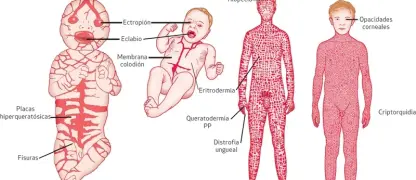Imagine skin so fragile that even the slightest touch can cause painful blisters. For those with Epidermolysis Bullosa, this is a daily reality. Understanding this condition is crucial for supporting patients and advancing care. This guide covers the key facts.
What are the main causes of Epidermolysis Bullosa?
- What is epidermolysis bullosa? It's a group of rare genetic disorders that cause the skin to be extremely fragile and blister easily.
- The condition is caused by mutations in genes that produce proteins responsible for connecting the top layer of skin (epidermis) to the layer beneath it.
- There are several major types of epidermolysis bullosa, including epidermolysis bullosa simplex, junctional epidermolysis bullosa, and dystrophic epidermolysis bullosa.

Key symptoms of Epidermolysis Bullosa to watch for
- The primary sign is fragile skin that forms blisters and sores in response to minor injury, friction from clothing, or even changes in temperature.
- Other common epidermolysis bullosa symptoms include blistering inside the mouth or oesophagus, dental problems, and malformed or missing fingernails and toenails.
- The severity of symptoms and the epidermolysis bullosa life expectancy can vary greatly depending on the specific type of the disorder.
How can you manage Epidermolysis Bullosa effectively?
- While there's no cure, epidermolysis bullosa treatment focuses on preventing blisters, managing pain, and avoiding infections through meticulous wound care.
- Living with epidermolysis bullosa involves daily care routines, such as using non-stick bandages, wearing soft clothing, and protecting the skin from trauma.
- A multidisciplinary medical team is essential for managing complications and addressing the nutritional and physical therapy needs of the patient.
>>> Don't miss: Rosacea – signs, triggers and effective treatments
Epidermolysis Bullosa pictures of skin blisters







>>> Discover more: Hidradenitis suppurativa – causes, symptoms and care
Managing this condition is a lifelong journey requiring immense strength and support. Early diagnosis and a comprehensive care plan are vital for improving quality of life. Always consult specialists for personalised medical advice and treatment options.
>>> Related articles: Ichthyosis – types, causes and treatment options




